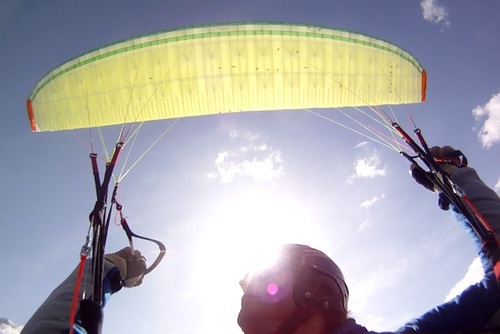NOVA Mentor 4 M |
|||||||||||||||||||||||||||||||||||||||||||||||||||||||||||||||||||||||||||||||||||||||||||||||||||||||||||||||||||||||||||||||||||||||||||


|
|||||||||||||||||||||||||||||||||||||||||||||||||||||||||||||||||||||||||||||||||||||||||||||||||||||||||||||||||||||||||||||||||||||||||||
Instability rating |
|||||||||||||||||||||||||||||||||||||||||||||||||||||||||||||||||||||||||||||||||||||||||||||||||||||||||||||||||||||||||||||||||||||||||||
|
|||||||||||||||||||||||||||||||||||||||||||||||||||||||||||||||||||||||||||||||||||||||||||||||||||||||||||||||||||||||||||||||||||||||||||
Glider characteristics |
|||||||||||||||||||||||||||||||||||||||||||||||||||||||||||||||||||||||||||||||||||||||||||||||||||||||||||||||||||||||||||||||||||||||||||
|
Launch preparations: average
launch characteristics: balanced, climbs constantly, no guidance necessary, good feedback during inflation, little braking required, control check simple, low takeoff speed
asymmetric collapse: canopy colllapses at high angle to leading edge, high dynamics, total course change 270-360°, (4), fast course change rate, marked forward pitching 60-75°, (4), moderate height loss 30-39 m, (2), low sink velocity 10-14 m/s, (1), collapse on opposite wingtip with course change <90°, (4), with tendency to cravat, (4), G-Force 2,5- 2,9 G, (2)
Frontal collapse: canopy collapses with high total collapse aera, marked pitch backwards 45-60°, moderate pitch forwards 30-45°, moderate dynamics, no course change, (1), delayed recovery, symmetric recovery, advanced pilot action required, (5), horseshoe, wingtips at front, delayed return to normal airspeed, marked deep stall phase, with tendency to cravat, (4), very high height loss >50 m, (4), low sink velocity 10-14 m/s, (1)
Spiral dives: rapid sink velocity increase, Moderate G-Force 3,5- 4.0 G, (2), Sink velocity after 720° <14 m/s, (1), Moderate maximum sink velocity < 18 m/s, (2), no increase of sink velocity on brake release (1), Course change 360-540° after spiral exit, (3), low height loss during recovery < 30 m, (1)
B-Stall: normal force required, moderate pitch backwards 15-30°, stable sink phase, no tendency to deform, immediate return to normal airspeed, 8-10 m/s, height loss on recovery 20-40 m
big ears: simple initiation, stable flight phase, pilot action required, Vsink unaccelerated 3,5-4 m/s, Vsink accelerated 4-4,5 m/s, Vunaccelerated 0-3 km/h less than trimspeed, Vaccelerated 3-5 km/h faster than trimspeed
Steering behaviour: agile, 75 cm brake travel range, Noticable brake pressure increase, Late stall point, easily identifiable |
|||||||||||||||||||||||||||||||||||||||||||||||||||||||||||||||||||||||||||||||||||||||||||||||||||||||||||||||||||||||||||||||||||||||||||
Notes |
|||||||||||||||||||||||||||||||||||||||||||||||||||||||||||||||||||||||||||||||||||||||||||||||||||||||||||||||||||||||||||||||||||||||||||
|
en: Asymmetric Collapse: Reactions to asymmetric collapses are very dependent on the collapse angle. Flatter collapses provoke normal reactions for a glider at the top end of the LTF-B category: the canopy pitches markedly forward but course changes of only 180° to 270° result after this. The opposite wing tip tends to roll in a little on a collapse, which helps dampen roll and pitch movements. Collapses at steeper angles are difficult to produce, but when provoked are answered by very marked forward pitching and rapid course changes. On occasion, large opposing collapses occurred with moderately dynamic course changes. On two occasions the canopy opened impulsively during forward pitching, which resulted in another collapse on the same side but without increased dynamics. Even though the glider has the highest aspect ratio of all tested here, no tendencies for cravatting were noted. Front Collapse: reacts typically for it's class. Recovery is delayed and height loss increased only when the glider is flown at the lower take-off weight limit. Re-inflation is progressive from the midpoint outwards. Spiral Dive: Reacts in accordance with its LTF classification when spirals are flown as set down in certification regulations and pilots allow their bodyweight to tip the harness to the outer side. In a neutral pilot position the glider turns for longer and indicates tendencies to remain in a stable spiral dive. B-Stall: Stable sink phase, moderate pitching back and low pitching forward. High initiation resistance. Big Ears: Slight wingtip flapping. |
|||||||||||||||||||||||||||||||||||||||||||||||||||||||||||||||||||||||||||||||||||||||||||||||||||||||||||||||||||||||||||||||||||||||||||
Rating |
|||||||||||||||||||||||||||||||||||||||||||||||||||||||||||||||||||||||||||||||||||||||||||||||||||||||||||||||||||||||||||||||||||||||||||
|
Safety class 5 This class of paraglider reacts very demandingly to one or more of the following manoeuvres: frontal collapse, asymmetric collapse or spiral dive and may present pilots with a particular challenge.Very demandingly means that the above manoeuvres result in highly dynamic reactions from the glider, and/or large height losses. Critical subsequent glider reactions are also to be expected. Expert piloting skills achieved through constant practice, fast personal reaction times and precise pilot inputs are required to be able to immediately react to the above manoeuvres to maintain flight control and prevent large height loss or subsequent critical glider reactions. In particular, pilots should be able to recognise the onset of the above manoeuvres and be able to prevent or minimise their effects through immediate and precise pilot inputs. |
|||||||||||||||||||||||||||||||||||||||||||||||||||||||||||||||||||||||||||||||||||||||||||||||||||||||||||||||||||||||||||||||||||||||||||

